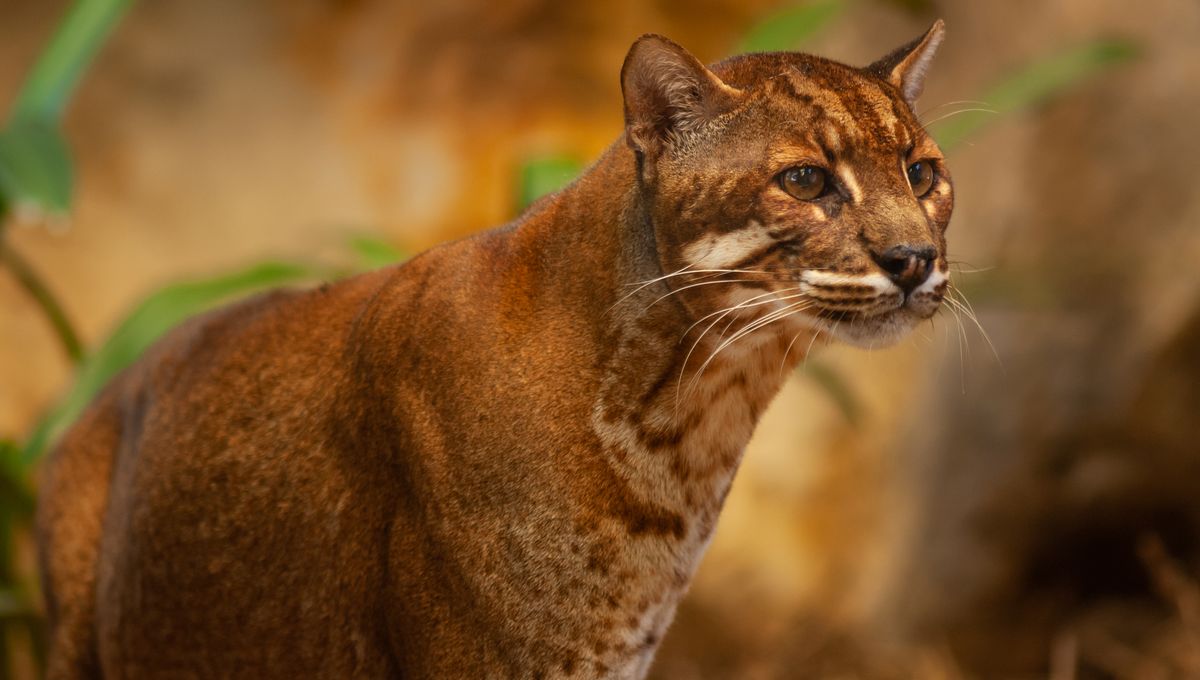
If you set a camera trap in the woods today, you might just be in for a big surprise. Camera traps are an incredibly useful tool for capturing animal behavior, especially elusive species, and providing a low-cost, non-invasive way to monitor wildlife populations. In Thailand, one recently managed to film an extremely rare golden cat wandering through a national park.
In Khao Luang National Park, a trail camera has recorded footage of an Asian golden cat (Catopuma temminckii), sometimes called Temminck’s cat, in honor of the zoologist Coenraad Jacob Temminck, who first described the species in 1827, or colloquially known as a “fire tiger” in Thailand. This medium-sized cat can be found across much of Southeast Asia and lives in a wide variety of forested areas; however, it is considered Asia’s rarest cat, often overshadowed by big cats like snow leopards and tigers.
The footage was recorded on July 8 by the Thailand Government Department of National Parks, Wildlife and Plant Conservation and was shared on their Facebook page. The species faces multiple threats, but the most pressing are habitat loss and illegal hunting. Currently, the species is listed as Vulnerable by the IUCN with a best population estimate at around 7,000 individuals.
While the one on the camera shows off its beautiful golden coat, the species is known to have six color morphs, including gray, cinnamon, dark brown, melanistic (black), and even a spotted form known as the “ocelot morph”. It’s recognised mostly from the white and black lines that run from across its cheeks up to the top of its head and its black ears.
As the Thai Department of National Parks, Wildlife and Plant Conservation pointed out in their Facebook post, it is also recognised for its distinctive walking behavior, with its tail usually raised up as it walks.
The species is quite stocky and thought to weigh about 9-16 kilograms (19-35 pounds), double to triple the size of a housecat, with males usually larger than the females.
Very little is known about the behavior of the Asian golden cat due to its elusive nature. The species was initially thought to prey on rodents, but research has suggested that they have a much more generalist and opportunistic diet, catching small reptiles, birds, and even small ungulates like chevrotains. Across different parts of their range, they may even take monkeys or wild pigs. Earlier this year, camera traps revealed a clouded leopard having a slow loris for dinner, highlighting the different behaviors that these camera traps can reveal.
Source Link: Extremely Rare Asian Golden Cat Captured On Camera Trap Slinking Through Thai Forest